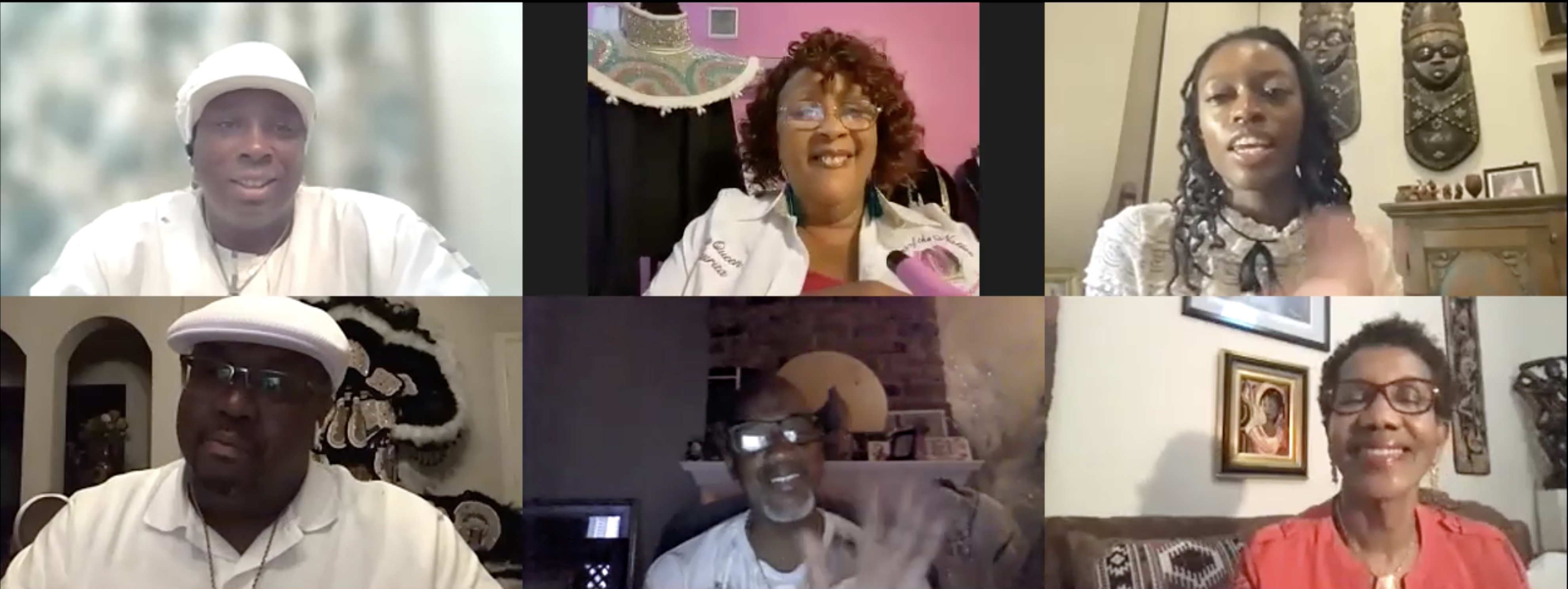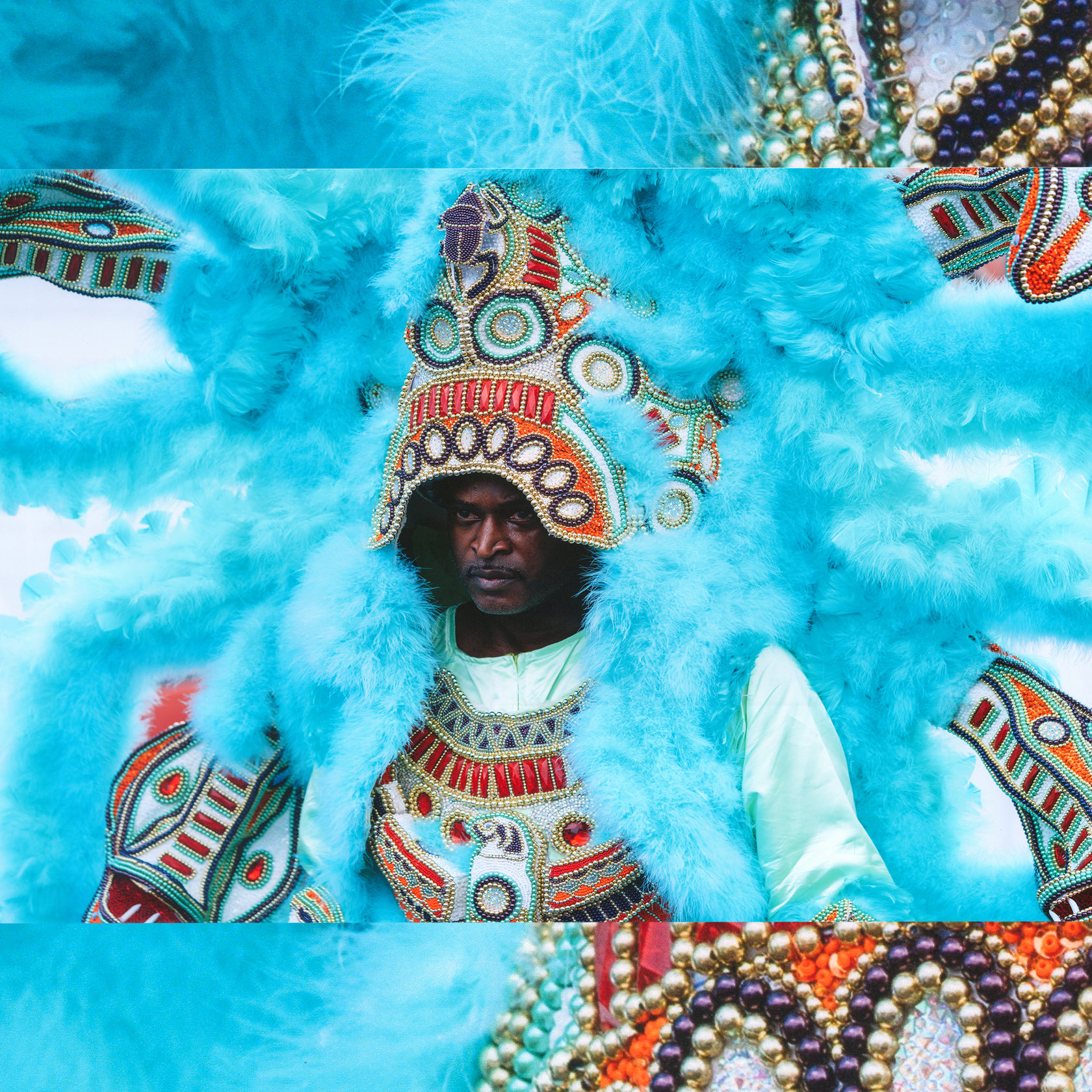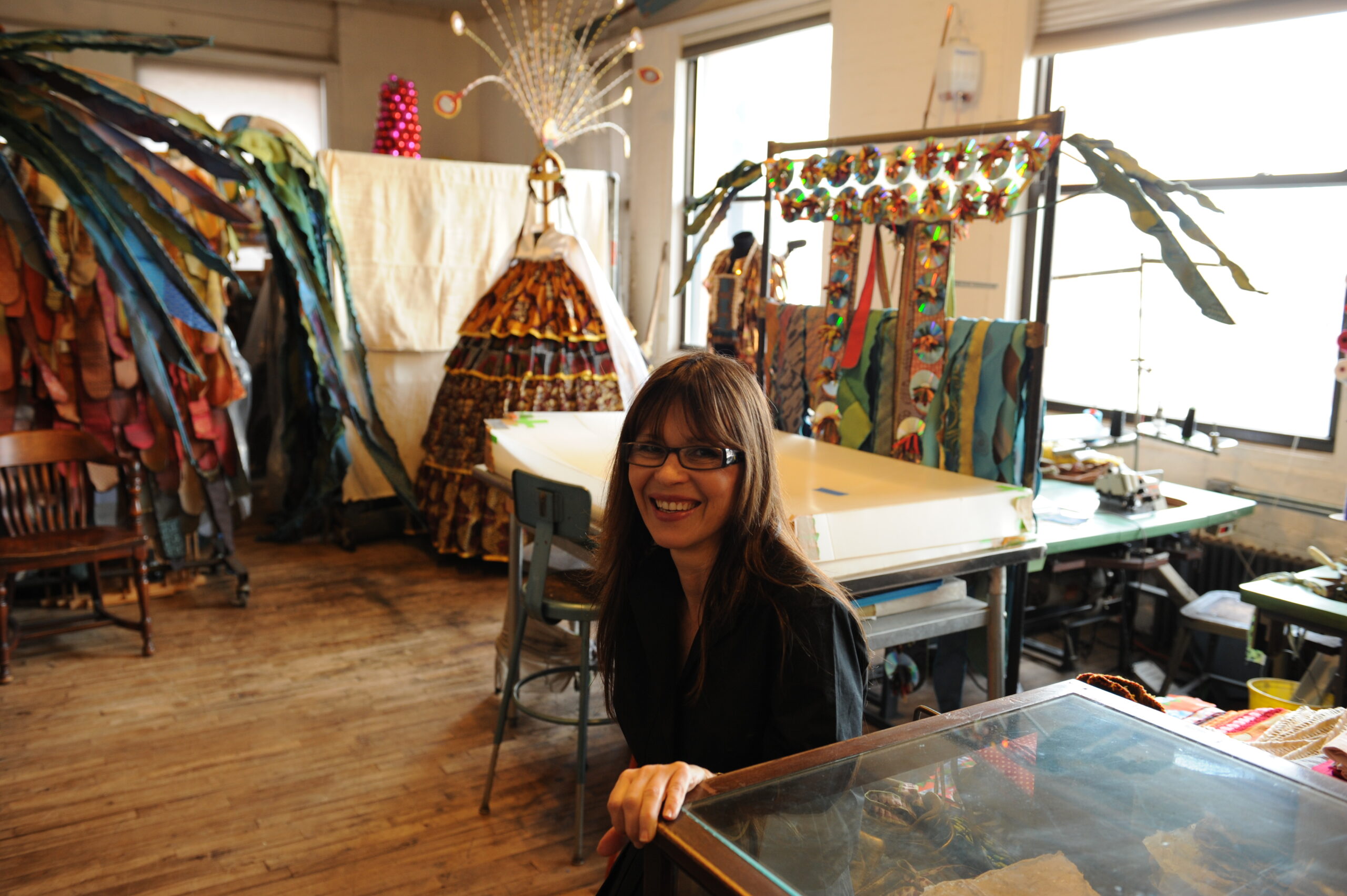
Join Newcomb online for part three of this multi-part series. Save the date for July 8 when the museum will release a new virtual roundtable conversation led by Dr. Joyce Marie Jackson that uses Laura Anderson Barbata: Transcommunality and Shaka Zulu’s work for camera (as seen here) as touchstones to consider the power of procession to foster diverse, intergenerational community relationships. Panelists will include stilt dancers Najja Codrington of the Brooklyn Jumbies and Sarauniya Zulu of Zulu Connection as well as three legendary figures of masking culture in New Orleans: Big Queen Laurita Dollis of the Wild Magnolias; Big Chief Derrick Hulin of the Golden Blades; and Big Chief Darryl Montana of the Yellow Pocahontas Hunters. The video will be released on July 8 on this web page, the museum’s Vimeo account, Facebook page, and via the museum’s e-newsletter.
These programs are funded in part under a grant from the Louisiana Endowment for the Humanities, the state affiliate of the National Endowment for the Humanities. Any views, findings, conclusions or recommendations expressed in this program do not necessarily represent those of the National Endowment for the Humanities. They are also supported in part by a New Orleans Jazz and Heritage Foundation Community Partnership Grant and by a Community Arts Grant made possible by the City of New Orleans.
About the moderator:
Joyce Marie Jackson, Ph.D. is chair of the Department of Geography & Anthropology and former Director of African & African American Studies at Louisiana State University in Baton Rouge. Dr. Jackson also holds the James J. Parsons Endowed Professorship at LSU. She earned her Ph.D. from Indiana University, Bloomington in folklore and ethnomusicology and her core research centers on African and African diaspora performance-centered studies, sacred and secular rituals, carnivalesque identities and cultural and community sustainability. As a cultural ethnographer, her research and publications have spanned the genres of gospel, blues and traditional jazz. Dr. Jackson has been instrumental in the production of several documentary recordings and authored their interpretive liner note booklets published by Smithsonian Folkways Recordings, Capitol Records, Inc. and Louisiana Folklife Recording Series. She has also authored many scholarly works including, Life in the Village: A Cultural Memory of the Fazendeville Community, and curated numerous art and historical exhibitions along with J. Nash Porter, the documentary photographer. One of their most notable exhibitions was for the Smithsonian Institution titled, New Orleans Mardi Gras Indians: Exploring a Community Tradition from an Insider’s View. Most recently, Dr. Jackson produced a documentary film titled, Easter Rock which was premiered at the Ethnografilm Festival in Paris, France.
About the panelists:
Based in New York, Najja Codrington is a co-founder of the Brooklyn Jumbies along with Ali Sylvester and is also Musical Director of the KowTeff School of African Dance. Najja was born into a family that is deeply rooted in both African and African-Caribbean culture. At the age of 10, under the guidance of Obara Wali Rahman, he received his first formal training of the Sabar orchestra as a member of Sabar Ak-Ru-Afrique. Najja’s studies encompass music and dance from both the Caribbean and West Africa. Najja has traveled abroad to Senegal, West Africa where he studied under the tutelage of the Drame/Diabate griot family. As a result, he was exposed to an extensive amount of lore. As Najja has studied African dance and drumming intensively for many years, several people have contributed to his learning, such as Sewaa Codrington, Aissatou Diop, Wilhemina Taylor, Gregory Ince, Karim Braithway, Kissima Diabate, and Souleyman Diop, to name just a few. Currently, Najja is involved in many cultural activities such as Cultural Youth International’s Brooklyn Jumbies, Adlib Steel Pan Orchestra KowTeff African Dance Company, Bakh Yaye and A Touch of Folklore & More.
Laurita Dollis has served as Big Queen of the Wild Magnolias for over 25 years and grew up in New Orleans. Widow of Big Chief Theodore Emile “Bo” Dollis, she began working on suits in the mid 1970s with her husband. In the 1980s Rita began masking with the family’s tribe, with whom she is also a musician. More recently, Laurita became founder and president of the Queens of the Nation Indian Council which advocates to create space for women within the Black masking Indian tradition and to share their knowledge with younger generations. She has received numerous honors, including the “Crystal Feather” award from the Mardi Gras Indian Hall of Fame.
Derrick Hulin has led the Golden Blades as Big Chief since 1998, when he revived the Uptown tribe with many community blessings, bringing it back to the New Orleans streets for the first time since 1970. As a tradition bearer for one of the oldest Mardi Gras Indian tribes, Hulin is a keeper of the Golden Blades’ history and its founding in 1936 in a saloon on the corner of Third & North Rocheblave, near the Calliope Projects, as a spin off from the Creole Wild West tribe. The Golden Blades’ first Big Chief was Ben Clark (1936-1943) followed by Leon “Happy Peanut” Robinson (1944-1946), Robert “Robbie” Lee (1948-1949), Leon “Happy Peanut” Robinson (1949-1950) and Paul “Red” Longpre (1950-1970). Hulin officially started masking as a Spy Boy with the Wild Magnolias at age 16 in Hollygrove, and created his first suit unofficially at age 4 with his father Irving Hullin. He is also a musician.
Darryl Montana is the Chief of the Yellow Pocahontas Hunters Black Masking Indian Tribe. According to the Chief, the New Orleans indigenous Black Indian movement of “masking Indian” on Carnival Day began in the late 1800’s in the Montana family. Hailing from a prominent family of Black Masking Indians and son of the Chief of Chiefs Allison “Big Chief Tootie” Montana, he uses sequins, beads, pearls, marabou, feathers and stones to create multi-dimensional Mardi Gras costumes for each year’s carnival in New Orleans. The techniques and use of materials have been passed down to him from his father. He began learning how to string beads at age six and made his first suit when he was eleven using a used vinyl raincoat as his canvas. His suits can take up to 5,000 hours to complete and they are created in response to themes like metamorphosis and evolution. He says that on Carnival day, “he is in full regalia representing a culture that unites the community around the tradition of masking and simply being the prettiest.” In addition to creating these massive pieces, Montana passes his techniques on to children and teaches them how to construct sculptural costumes. Montana’s work is in the public collections of the International Folk Art Museum and the Joan Mitchell Foundation and private collections of the late John Scott, Diego Cortez, Ron Bechet, and Mapo Kinnord-Payton, to name a few.
Sarauniya Zulu is a versatile stilt dancer, musician and educator based in New Orleans who has performed traditional African arts internationally with her family since she was a child. Niya’s many performing credits include the historical stage production “New Orleans Voices of Congo Square” at the Orpheum Theater, produced by Zulu Connection and created by her parents Big Chief Shaka Zulu and Naimah Zulu. She is fluent in French and studied Anthropology at the University of New Orleans.





